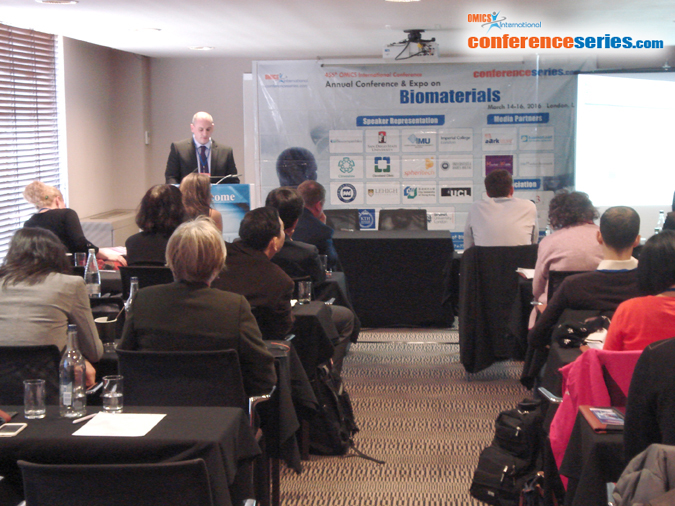
Hugh Kilpatrick
Biocompatibles UK Ltd, UK
Title: A comparison of arterial distribution of bead prototypes in a rabbit renal artery embolization model
Biography
Biography: Hugh Kilpatrick
Abstract
Embolisation bead prototypes possessing significantly higher compression stiffness than commercially-available products were compared in vitro in a flowing glass-plate model to assess their penetration potential and bead size, not stiffness, was shown to be the influential factor. The comparative arterial distribution of prototypes in the 40-90 ïm and 70-150 ïm size range, together with commercially-available products (Embozene(TM)) was performed in a rabbit renal arterial embolisation model. Kidneys were embolised in 9 rabbits with beads of a particular size. Following embolisation of the second kidney with the comparator product, the animals were sacrificed and histologic evaluation performed. Three radial tissue slices, evenly distributed from the upper to lower poles, were sectioned from each kidney and stained with haematein-eosin-saffron. The pathology evaluation assessed: (a) The arterial distribution pattern in histology according to a division of the kidney in 5 zones of diminishing vessel diameter; (b) Diameter of the occluded vessels; (c) Number of beads present in occluded vessel sections; and (d) In vivo deformation of the beads. The model could clearly differentiate between the distribution patterns of beads of different sizes. Measurements of the diameter of occluded vessels highlighted that in all cases, the smaller bead sizes occluded more distally than larger beads. In addition, this model allowed for a comparison between beads of different stiffness but similar diameter and supported the in vitro data from the glass plate model that size and not stiffness was the biggest influence on depth of penetration and distribution.



